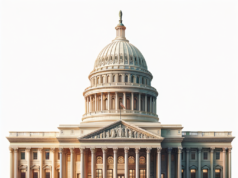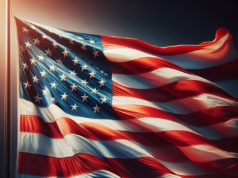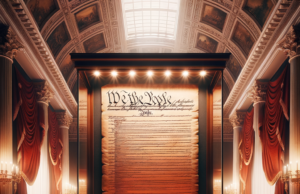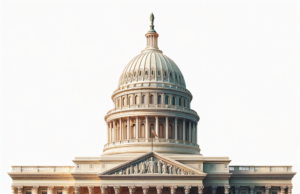Contents
- 1 Understanding Assault Weapons: Definitions and Classifications in the American Context
- 2 Historical Overview: The Evolution of Assault Weapon Legislation in the United States
- 3 Examining the Arguments: Proponents of Assault Weapon Bans and Their Rationale
- 4 Counterarguments: Opponents of Assault Weapon Bans and Their Concerns
- 5 Analyzing the Data: The Impact of Assault Weapon Bans on Crime Rates and Public Safety
- 6 Future Considerations: The Ongoing Debate and Potential Legislative Developments in America
The debate surrounding assault weapon bans in the United States has intensified in recent years, particularly in the wake of high-profile mass shootings that have reignited discussions about gun control and public safety. As lawmakers, advocacy groups, and citizens grapple with the implications of such bans, it is essential to delve into the definitions, historical context, and the arguments both for and against these measures. This article aims to provide a comprehensive overview of the controversy surrounding assault weapon bans, examining their impact on crime rates and the future of gun legislation in America.
Understanding Assault Weapons: Definitions and Classifications in the American Context
In the American context, the term “assault weapon” is often used to describe a category of firearms that are designed for rapid fire and military-style use. The classification of these weapons can vary significantly depending on state and federal laws. Generally, assault weapons are characterized by features such as detachable magazines, pistol grips, and the ability to accept larger ammunition clips. The Federal Assault Weapons Ban of 1994, which expired in 2004, defined assault weapons based on specific characteristics and included a list of banned models. However, the lack of a universally accepted definition has led to confusion and inconsistency in the application of laws across different jurisdictions.
Historical Overview: The Evolution of Assault Weapon Legislation in the United States
The legislative history of assault weapon bans in the United States is marked by a series of attempts to regulate firearms in response to escalating gun violence. The first significant federal legislation was the National Firearms Act of 1934, which imposed restrictions on machine guns and sawed-off shotguns. However, it wasn’t until the 1980s and 1990s that the issue of assault weapons gained national attention, culminating in the Federal Assault Weapons Ban of 1994. This ban prohibited the manufacture and sale of certain semi-automatic firearms and high-capacity magazines for ten years. Despite its expiration in 2004, various states have enacted their own bans, reflecting a patchwork of regulations across the country. The ongoing debate continues to shape the legislative landscape as advocates push for renewed federal action.
Examining the Arguments: Proponents of Assault Weapon Bans and Their Rationale
Proponents of assault weapon bans argue that these firearms contribute significantly to gun violence and mass shootings, posing a threat to public safety. They contend that the high-capacity magazines and rapid-fire capabilities of assault weapons enable shooters to inflict greater harm in a shorter amount of time, making them particularly lethal in mass shooting scenarios. Advocates also emphasize the need for stricter regulations to prevent firearms from falling into the hands of individuals with a history of violence or mental health issues. By banning assault weapons, supporters believe that society can reduce the frequency and severity of gun-related incidents, ultimately saving lives and fostering a safer environment for all citizens.
Counterarguments: Opponents of Assault Weapon Bans and Their Concerns
Opponents of assault weapon bans argue that such measures infringe upon the Second Amendment rights of law-abiding citizens. They assert that banning specific types of firearms does little to deter criminal behavior, as individuals intent on committing violence will find alternative means to obtain weapons. Additionally, critics argue that the focus on assault weapons distracts from addressing the root causes of gun violence, such as mental health issues and socioeconomic factors. Many gun owners also express concerns about the potential for government overreach and the slippery slope of increasing restrictions on firearms, fearing that such bans could lead to broader limitations on personal liberties and self-defense rights.
Analyzing the Data: The Impact of Assault Weapon Bans on Crime Rates and Public Safety
The impact of assault weapon bans on crime rates and public safety remains a contentious topic, with studies yielding mixed results. Proponents of the bans often cite research indicating that states with stricter gun laws, including assault weapon bans, experience lower rates of gun violence. Conversely, opponents argue that data does not conclusively demonstrate a direct correlation between assault weapon bans and reduced crime rates. Some studies suggest that while mass shootings may decrease in frequency, overall gun violence remains largely unchanged. The complexity of the issue is further compounded by factors such as variations in state laws, enforcement practices, and the availability of firearms through illegal channels, making it challenging to draw definitive conclusions about the effectiveness of such bans.
Future Considerations: The Ongoing Debate and Potential Legislative Developments in America
As the debate over assault weapon bans continues, the future of gun legislation in America remains uncertain. Recent mass shootings have reignited calls for stricter gun control measures, prompting lawmakers to reconsider the feasibility of reinstating a federal assault weapons ban. However, the deeply entrenched cultural attitudes towards gun ownership and the political polarization surrounding the issue present significant obstacles to legislative change. Advocacy groups on both sides of the debate are mobilizing to influence public opinion and sway policymakers, indicating that the conversation surrounding assault weapon bans will persist. As the nation grapples with the complexities of gun violence and public safety, the outcome of this ongoing debate will likely shape the future of firearms regulation in the United States.
The controversy surrounding assault weapon bans in America is emblematic of the broader struggle to balance individual rights with public safety. As stakeholders continue to engage in passionate discussions, it is crucial to consider the historical context, the data surrounding crime rates, and the diverse perspectives that inform this debate. The path forward will require thoughtful dialogue and a commitment to finding solutions that address the pressing issues of gun violence while respecting the rights of responsible gun owners. The future of assault weapon legislation remains a pivotal aspect of America’s ongoing conversation about gun control and public safety.


























